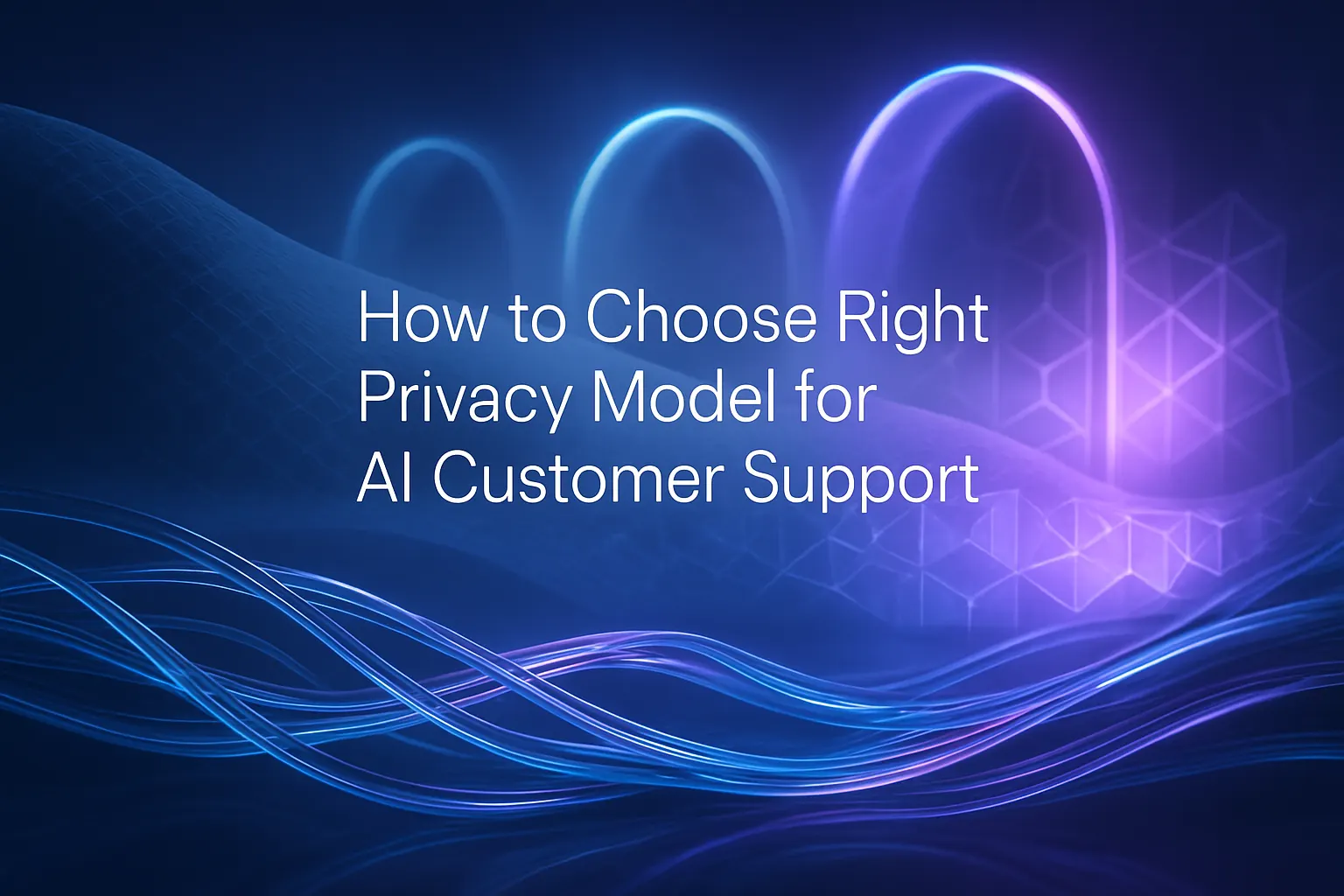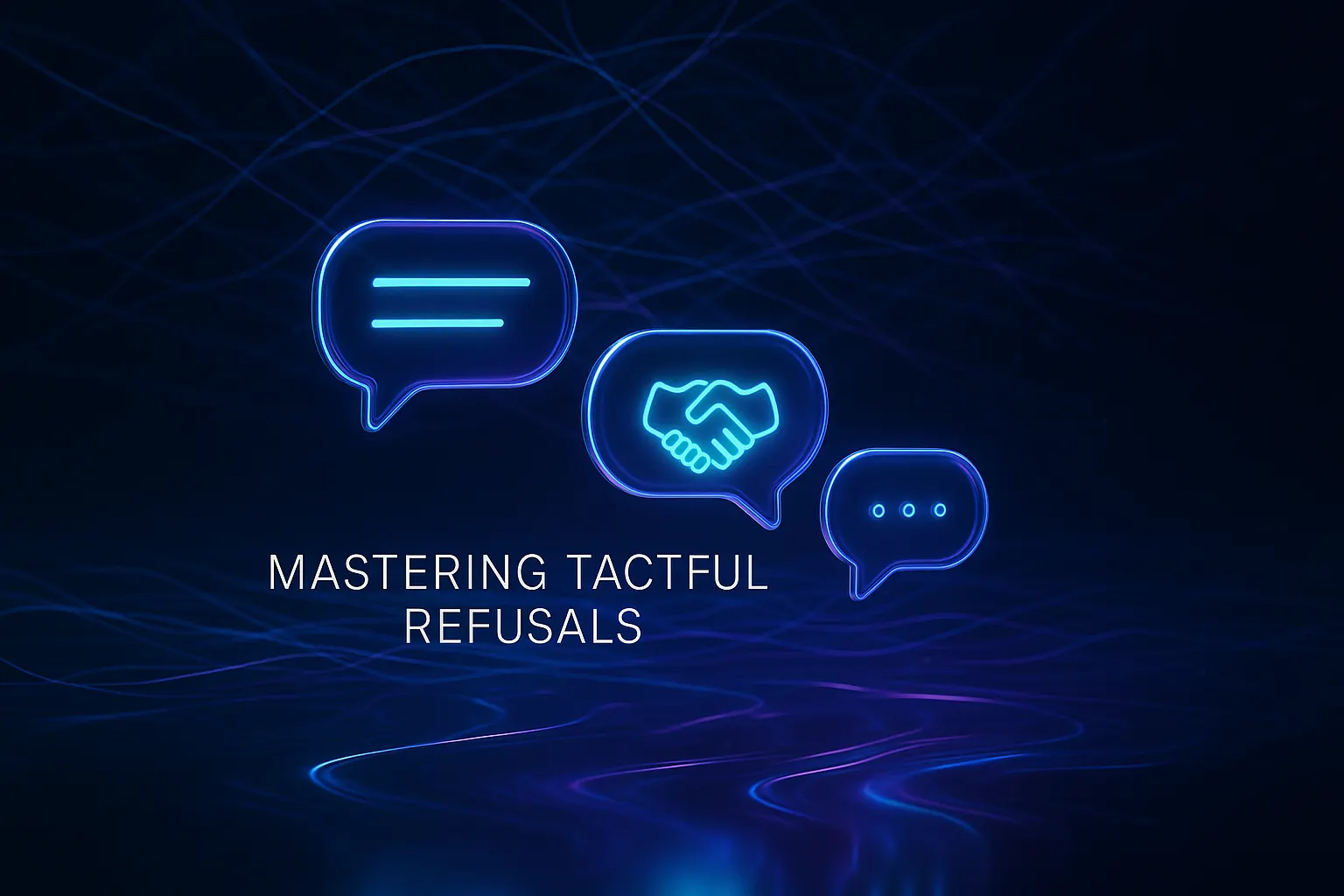Privacy Choices That Shape Your AI Support Strategy
Every customer support ticket holds sensitive information: payment details, account identifiers, even subtle mentions of health or private matters. Using AI assistants can significantly speed up responses, but the privacy model you choose determines how well you manage risk. A suitable privacy model not only safeguards people and maintains trust, but also keeps regulators satisfied and helps you avoid costly rework or surprise audits.
This guide provides actionable privacy models for integrating AI in customer support. You’ll learn how to map your data, evaluate controls, build a shortlist of capable vendors, and understand where solutions like Typewise fit within a competitive market.
Map Your Data Before You Choose a Privacy Model
Begin by creating a clear inventory of your data. List the specific types of information your agents and AI bots access, from customer names to transaction details. Add information from sources like CRM data, ticketing systems, emails, chat logs, and content from knowledge bases. Note which countries your data touches, document how long you need to keep it, and highlight any fields that pose high risk.
- PII and identifiers: Names, emails, addresses, phone numbers, account numbers.
- Financial data: Order details, invoices, partial card data, payment tokens.
- Health and sensitive data: Always important; some sectors may have additional requirements or heightened risks.
- Access secrets: API keys, tokens, internal URLs. These must never leave your secured environment.
Document every data flow: where the data originates, who can access prompts and outputs, and which systems store logs. This detailed map forms the foundation for all privacy decisions going forward.
The Main Privacy Models, Explained
Public Cloud LLM With Zero Data Retention
This model uses a provider’s API with explicit settings to prevent data storage and model training. The vendor processes your prompts and outputs in real-time but doesn’t retain them afterwards. Fast to implement and offering a wide model selection, this approach works well for teams with lower-risk data and reliable redaction. Potential drawbacks include shifting vendor policies and concerns about data jurisdiction.
Vendor-Managed Private Cloud in Your Region
Data remains within a specified geographic boundary, with the vendor enforcing strong isolation and retention policies. This model is ideal for teams operating within regulated regions or under strict enterprise compliance. It minimizes transfer risk but still depends on the vendor’s security practices and audit processes.
Customer-Managed VPC or On-Prem Inference
Here, you host AI models in your own virtual private cloud or on-premises infrastructure. You have direct control over network, storage, and access. This model suits scenarios involving highly sensitive data or where strict regulatory compliance is required. Expect increased operational investment for model updates and scalability.
Hybrid RAG With Local Knowledge Bases
Retrieval Augmented Generation (RAG) systems keep proprietary information in your secure stores, only sending filtered fragments to the AI for processing. Redaction is applied to both incoming prompts and outgoing replies. This approach greatly reduces your exposure, making it a smart choice for policy-heavy or account-sensitive customer inquiries.
On-Device or Edge Inference
On-device or edge inference involves running smaller AI models directly on local devices, such as specific field tools or kiosks. While this can limit your solution’s scope due to operational costs and model capacity, it dramatically enhances privacy by containing data entirely within local systems and avoiding external transfers.
Federated Learning and Synthetic Data
Federated learning enables AI to learn from distributed data while keeping raw information on-premises. Synthetic data augments training without direct exposure of real records. Both strategies limit risk but introduce technical complexity, best suited for organizations training custom AI at scale.
Security Controls That Make or Break Privacy
- Encryption and keys: Secure all data in transit (TLS) and at rest with strong encryption; prefer customer-managed keys.
- PII redaction: Mask sensitive information in both prompts and logs, and filter all outputs to prevent accidental leaks.
- Access controls: Implement single sign-on (SSO) with SAML or OIDC, use role-based access, and enable SCIM provisioning.
- Audit trails: Maintain immutable logs for all prompts, outputs, and administrative actions.
- Data retention: Offer configurable retention with guaranteed deletion policies and transparent export options.
- Model guardrails: Deploy defenses against prompt injection, restrict file types, and enforce rate limits as needed.
- Vendor transparency: Ask for subprocessor lists, penetration testing results, and detailed incident response playbooks.
Require vendors to demonstrate these controls, provide up-to-date attestations, show sample redaction flows, and verify deletion during trials.
Compliance and Contracts You Should Sign
Ultimately, your chosen privacy model must be backed by strong contracts. Clarify the roles and responsibilities of both processor and controller under GDPR, CPRA, and similar regulations. Get a Data Processing Agreement with well-defined obligations. Incorporate Standard Contractual Clauses for any cross-border data transfers. Review data residency options and record a Data Protection Impact Assessment (DPIA) before moving towards production.
Pursue certifications relevant to your sector. SOC 2 Type II and ISO 27001 standards indicate strong practices; in healthcare, HIPAA alignment may be necessary, and for payments, PCI DSS boundaries are essential. Confirm breach notifications, audit rights, and key security contacts in every agreement.
Vendor Landscape and How to Compare
The AI support market evolves rapidly. Assess vendors by their privacy stances, not just product features. Focus on where data inference occurs, who holds encryption keys, and how robust redaction is. Evaluate writing quality and tone adaptation for customer replies, as well as integration with your CRM and email flows.
- Zendesk AI: Seamlessly integrates into your existing Zendesk workflows. Check data residency and training settings.
- Typewise: Privacy-centric writing assistance built for support teams; integrates with CRM, email, and chat tools.
- Salesforce Einstein for Service: Offers deep CRM integration; review data sharing policies and log retention practices.
- Intercom with Fin: Fast to set up within Intercom environments. Validate prompt logging and fallback safety.
- Ada and Ultimate.ai: Mature automation options; review guardrails for managing sensitive interactions.
- Forethought and Lang.ai: Flexible classifiers and assistants. Inspect their deployment options and access controls.
- Microsoft Copilot for Service: Leverages the enterprise security stack; verify boundaries between connected services.
- Freshdesk with Freddy AI: Integrated suite; review export capabilities and default training behaviors.
For a detailed examination of operating models and vendor approaches, see how leaders adapt their AI stacks in this deep-dive on real-world AI adoption in customer service.
Cost, Latency, and Quality Tradeoffs
Each privacy model impacts your operating budget and response times. Private environments increase fixed costs, while public APIs are typically pay-as-you-go. Hybrid RAG strategies add expenses for vector storage and contextual search. Latency can rise due to additional redaction or information retrieval. On the upside, richer context and tone control drive higher response quality. Always measure total cost of ownership, not just per-operation spend.
Model choices further shape the experience. Smaller AI models can deliver quick, private replies with targeted fine-tuning. Larger models may minimize manual editing and retries. Match your model’s capabilities to the expected ticket complexity and acceptable privacy risk.
Decision Checklist You Can Run This Week
- Inventory sensitive information and document data flows.
- Determine desired residency for AI inference and system logs.
- Select a privacy model from the above options based on your needs.
- Set critical requirements: key management, redaction, SSO, and audit trails.
- Shortlist three vendors who meet all mandatory criteria.
- Draft a Data Protection Impact Assessment (DPIA) and review it with your legal counsel.
- Design and run a masked, read-only pilot test.
- Establish clear metrics for both privacy and support quality.
Run a Low‑Risk Pilot, Then Scale
Launch your first AI pilot on a small scale. Use masked or pseudonymized transcripts and select a limited knowledge base. Restrict access to a well-defined test group and log all activity in your security information and event management (SIEM) system. Compare assisted replies with human-only outputs, evaluate redaction accuracy, monitor for false disclosures, and track both handling time and customer satisfaction scores. Expand only after you achieve consistently safe and high-quality results.
Where Typewise Fits in Your Privacy Plan
Typewise delivers writing assistance specifically designed for support and business teams. Integrating directly into your CRM, email, and chat applications, it helps agents craft clear, brand-consistent replies with less need for corrections. Crucially, Typewise prioritizes data privacy alongside efficiency, a balance well suited for teams valuing both control and speed.
Unlike other platforms, Typewise tailors writing assistance solutions to individual business requirements, rather than employing a standardized model. This approach reduces architectural risk and speeds up onboarding. If branding and careful phrasing are important to your support operation, Typewise is worth your close consideration.
Putting It All Together
Privacy is a strategic decision, not merely a checklist. Start by mapping your data, then select a privacy model aligned with your risk conditions and regional needs. Insist on concrete controls, validate with a trial, and make privacy commitments enforceable in your contracts. Build confidently, one step at a time.
FAQ
What is the importance of mapping data before choosing a privacy model?
Mapping your data is crucial to understanding the potential risks associated with sensitive information. Without this foundation, any chosen privacy model risks missing critical vulnerabilities and imposing insufficient protections.
How does a customer-managed VPC improve data security?
This model provides direct control over your network and storage, making it ideal for handling highly sensitive data. However, the trade-off lies in increased operational maintenance and ensuring all security measures are up-to-date.
What are the potential drawbacks of using Hybrid RAG systems?
While Hybrid RAG systems reduce exposure of sensitive data, they demand careful management of data fragmentation and redaction processes. Failures in these areas can lead to incomplete data protection.
Why are encryption and access controls critical in AI privacy?
Strong encryption and access controls are your first line of defense against data breaches and unauthorized access. Overlooking these can lead to catastrophic leaks and a loss of regulatory compliance.
What should companies prioritize when choosing an AI vendor?
Beyond product features, prioritize a vendor's data handling policies, placement of data inference, and their transparency in security practices. Vendor selection goes wrong when price and features overshadow fundamental privacy considerations.
How can latency and cost trade-offs impact AI model performance?
Higher privacy measures can increase costs and latency, impacting overall system efficiency. Cheap and fast models often compromise on data security, potentially undermining your entire privacy strategy.





